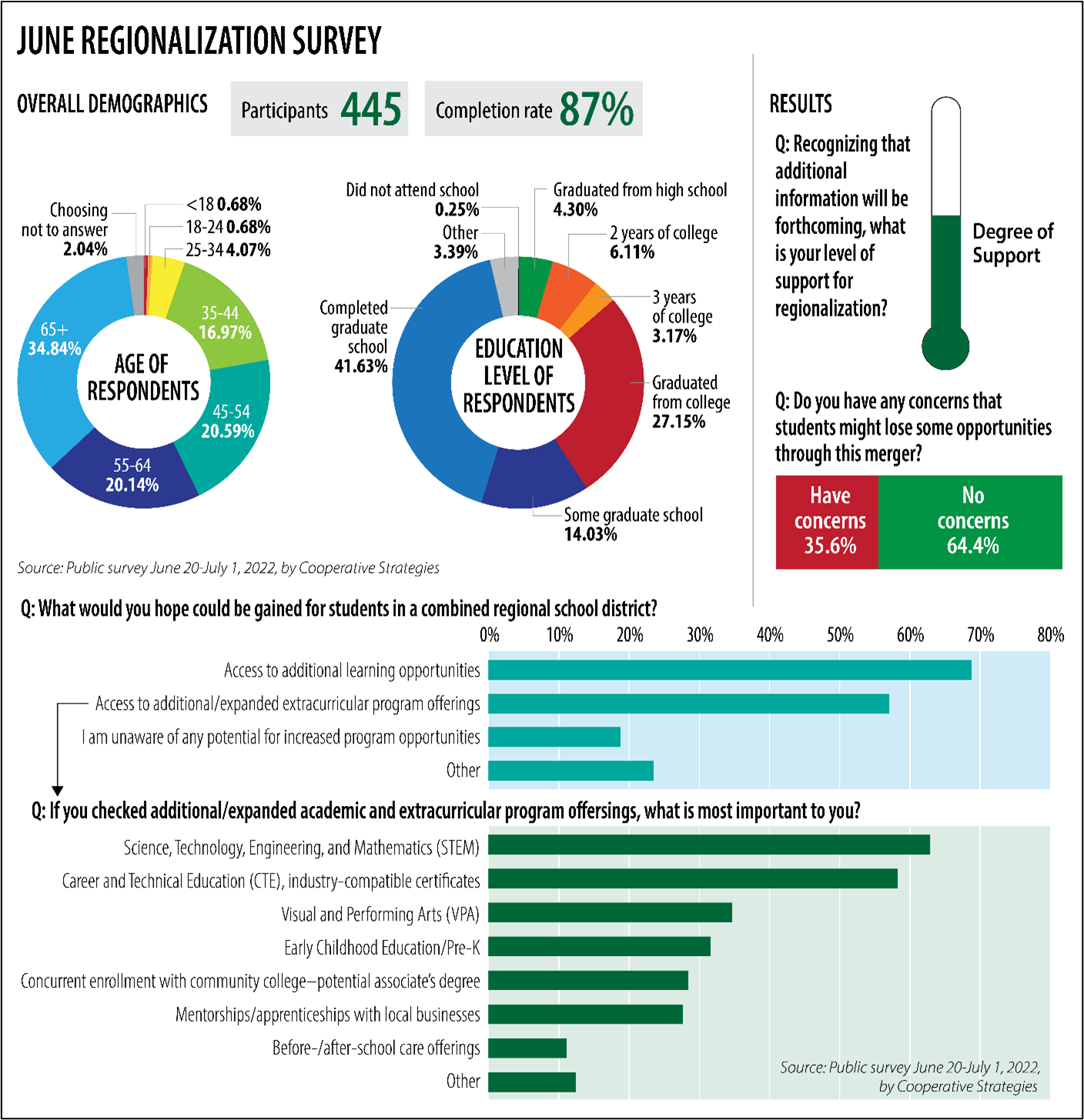July Community Engagement Public Meetings
For more information: www.middletown-newport.us
NEWPORT — The primary concern about school district regionalization has been the lack of specifics on the possible opportunities and financial benefits. In public meetings on Monday, consultants revealed their findings on the potential savings of regionalization, which were many, and the educational benefits that could result for Middletown and Newport students.
During two sessions held from Innovate Newport headquarters on Broadway, 60 attendees were provided data on everything from current spending on education to the potential savings in each community and three case studies of school districts in California, Pennsylvania, and Texas that regionalized. Importantly, consultants also spelled out the cost of Middletown and Newport “doing nothing,” providing insights for each municipality.
Throughout, organizers stressed the importance of focusing on student achievement as the unifying factor behind regionalization. The mission and vision of regionalization are to improve the overall school experience for every student.
Consultants said the goal was to provide everyone a complete picture of the impacts of regionalization as residents are expected to vote on the proposal on Election Day, November 8. For those unable to make Monday’s meetings, a virtual session was held on July 26. Also, recordings of the presentations and other documentation is available online at middletown-newport.us . The next regionalization meetings are slated for August 22 and 23.
The public is encouraged to explore the information and respond in a survey by the end of the day Thursday, August 4.
Meetings attendees were introduced to consultants Jessica Goodell of Woolpert , David Sturtz and Susan Miller of Cooperative Strategies, and members of the Regionalization Steering Committee from each community. Representing Newport on the committee are City Manager Joseph J. Nicholson Jr., School Superintendent Colleen Burns Jermain, City Council Vice Chairwoman Lynn Underwood Ceglie, and School Committeewoman Rebecca Bolan. Middletown is represented by Town Administrator Shawn J. Brown, School Superintendent Rosemarie K. Kraeger, Town Councilwoman Barbara A. VonVillas, and School Committee Chairwoman Theresa Spengler.
The group defined regionalization, how it would work, and framed the November 8 vote. There were also specifics about the transition to regionalization and how the school district would be governed. The presentation explained to attendees the need to move quickly to regionalize now because the state has said that its current financial incentives won’t be around much longer.
Data collected from the June informational meeting indicated there is a good level of support for regionalization already and fewer concerns about lost opportunities as a result of the change. (See chart below.)

A look at the data shows Middletown and Newport spend more per student than many similarly sized communities across Rhode Island. (See chart below.)

While consultants stressed regionalization was not about the money, the impact on funding needs to be considered. Potential educational benefits for students would stem from increased savings that allow for investments in our schools. (See chart below.)

Case studies included Twin Rivers Unified School District in California, the Central Valley School District in Pennsylvania, and the Texas City Independent School District in Texas. Across the board, they reported a positive impact of increased focus on improving student outcomes. That included better academic performance, a reduction in adverse behaviors, and more opportunities academically and for capital improvements.
Based on their findings, the consultants indicated there was no reason Middletown and Newport couldn’t capitalize on similar opportunities here.
“Regionalization of Middletown and Newport schools is a unique opportunity to expand educational programming by providing potential access for all students to educational offerings,” they said. “Further, financial incentives from the state allow for significant facilities investments while minimizing impact to local taxpayers.”

